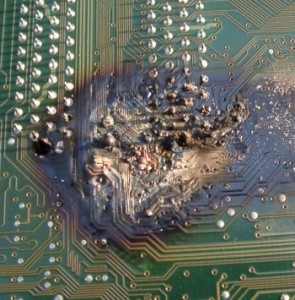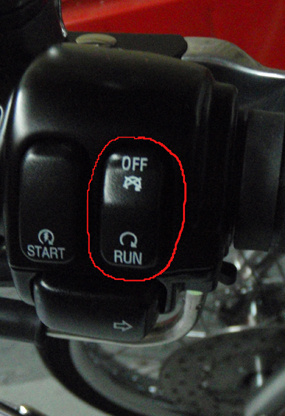I was minding my own business, on my way to the local Costco in my 12-year-old Jeep when I thought I noticed the brake pedal move just a little bit lower than usual. “Probably just my imagination,” I thought to myself as I approached the next traffic light. The pre-rush traffic was beginning to build. I modulated the pedal, trying to tease out the difference I thought I might have felt.
At the next light it became clear that there was a serious problem. The pedal abruptly sunk most of the way to the floor. The idiot light on the dash came on simultaneously: BRAKE. The brakes themselves weren’t very effective at all. I used the engine in low gear – it’s a Jeep, it has a really low low gear – to slow for the light. I shoved the clutch in coasted to a stop. “That wasn’t so bad,” I thought.
The shopping center parking lot on the next block seemed like a good place to look things over. The light changed. I made my way into the mostly empty lot and again coasted to a stop.
A walk-around revealed the problem quick enough: the left rear brake line had ruptured. The puddle of brake fluid grew, revealing the general area of the damage. The nearly empty reservoir confirmed what I already knew.
My insurance company provides roadside assistance and maybe this was a good time to use it. It’d probably take a while, I figured, it usually does. But there was a Wal-Mart in the shopping center. I could buy a can of brake fluid and try for home, maybe 15 miles away. It was a gym day, late afternoon, and waiting for the tow would probably make me miss a workout. But wrecking the Jeep would probably do that, too. I calculated the odds…
I bought the fluid, filled the reservoir and set out for home. No brakes. Well, not quite. I found that when topped off I’d have about 20% brakes for maybe 5 brief applications. Maybe. Panic stops were definitely out of the question.
Between anticipating the need to slow and stop and using the manual transmission and engine braking for speed control the ride home went without incident. Full stops even became easy: slow in low gear and kill the ignition. I didn’t make any new friends in the cars following.
When I got home I used the creeper, rolling underneath for a better look. Finding the exact point of the rupture was easy. The line was corroded and it finally let go. Jeeps are the easiest vehicles in the world to service, one of the reasons I love mine. The brake line is double-wall tubing running the length of the frame, all very accessible. I mentally ticked off the steps. Obtain a replacement brake line, maybe the other side, too. They’d have to come from a dealer, probably special order. Pull and replace the lines. The fittings at the master cylinder, brass, probably, having never been turned for the life of the vehicle, could be troublesome. Likely the same with the fittings at the slave cylinders, but I wasn’t about to pull a wheel just to confirm. Finally, refill and bleed the system. Oh, and those bleeders might prove tough to turn, too… I estimated a half-day of work on my back in the driveway – IF nothing went wrong on the way. It just might be worth sending this job out.
The next day I phoned up a place that’s done some work for me in the past. I described the problem. “So the pedal feels spongy and the indicator light is on?” Eddie asked. I laughed. “Dude! The pedal’s on the floor! The corroded double-wall line has a hole and the fluid’s all over the ground. Yeah, the light’s on alright. I need you to replace the line, maybe replacing both of ’em’s a good idea as long as you’re in there.” “Got Triple-A?” “No, I don’t, Eddie. I’ll drive it in.” There was a long pause. “You know, I can’t advise you to do that,” Eddie began. I think I could almost hear him suppressing a laugh, but it was probably just the cell connection. “Let me get you a tow,” he tried. “Nah, I’m good.”
Later that afternoon I drove it to the shop. No brakes. Pam followed me. I think she was more nervous than I was. Again, there were no incidents. A Beemer had stopped quickly to make a left on a two-lane but I had anticipated it and slowed appropriately. On a bike, if you don’t evaluate lots of possibilities ahead of time you get hurt. The training paid off.
As I dropped the key I reminded Eddie, “Maybe you should put a sign on the dash, y’know, for safety.”
Soon I should hear what the job will cost. If I like what I hear maybe I’ll have him replace the factory exhaust system, which has finally reached its end of life…


